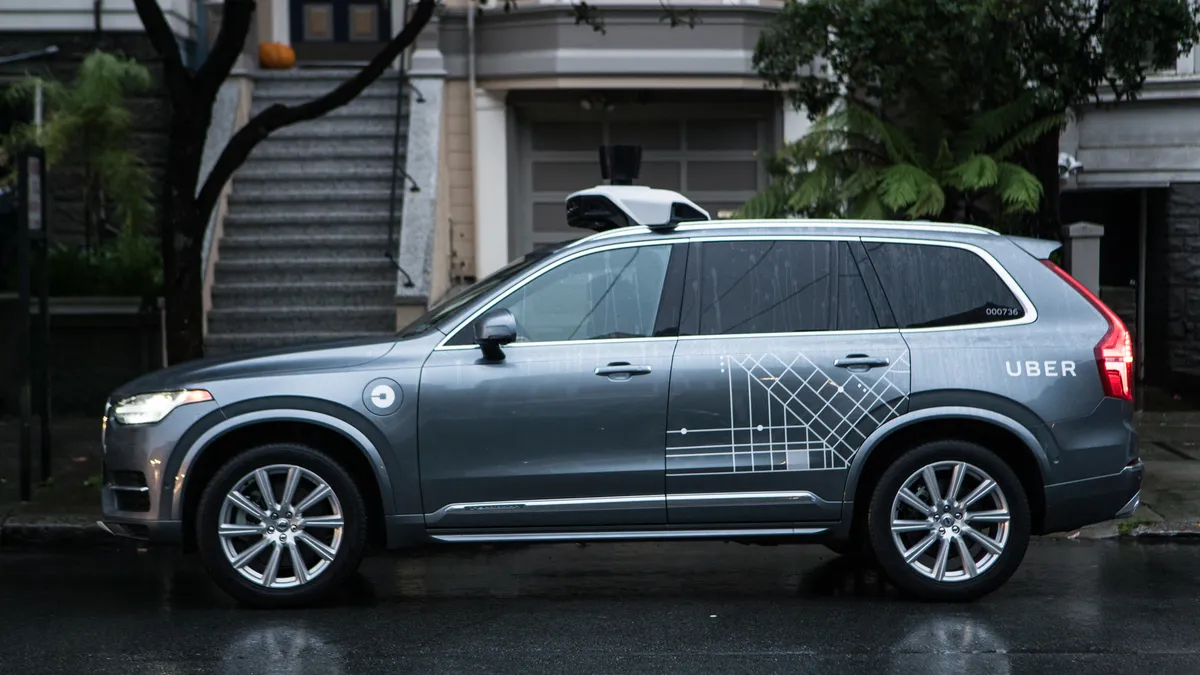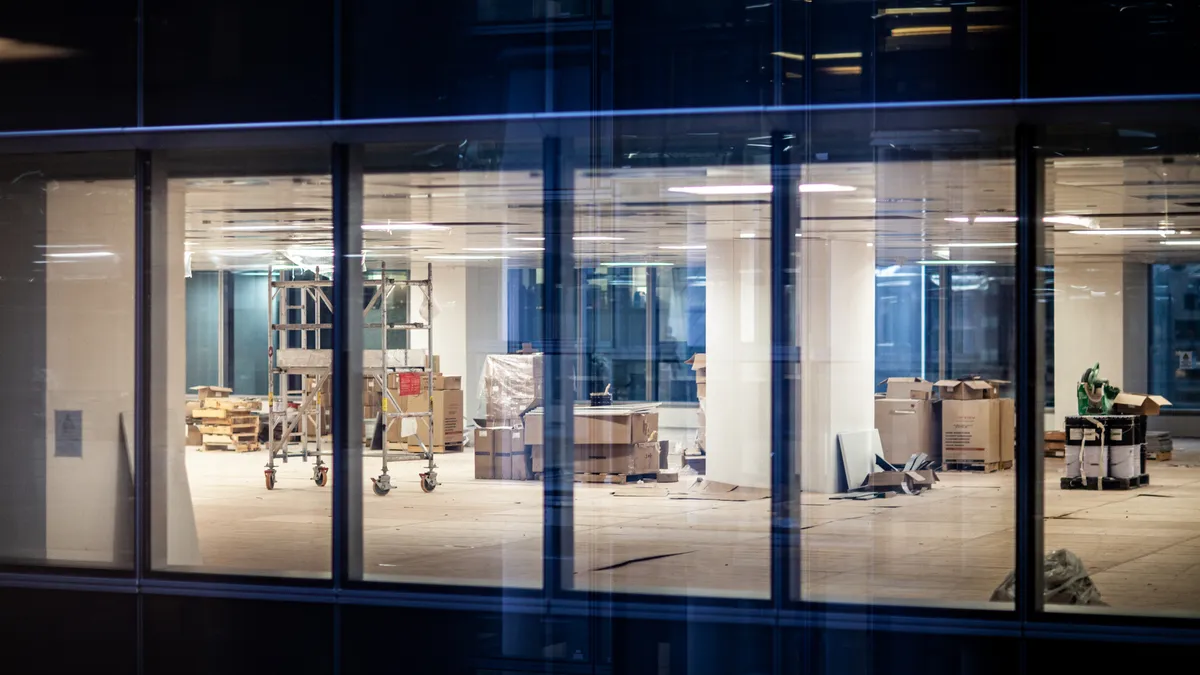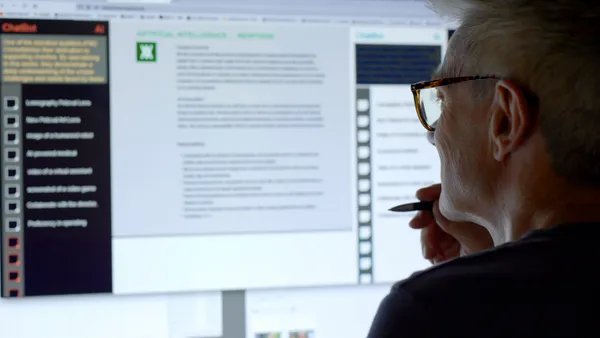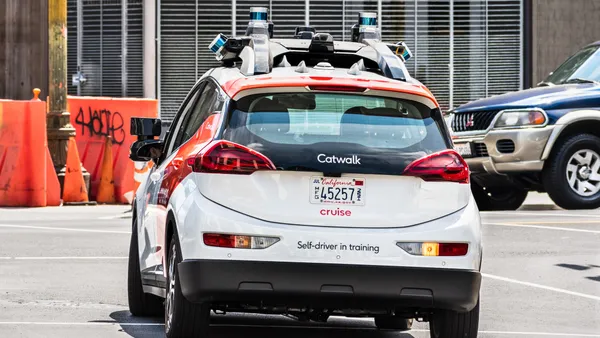Dive Brief:
- General Motors (GM) Cruise and Uber are opening up to the public the visualization software they use for autonomous vehicle (AV) research, according to The Verge. Cruise’s Worldview and Uber’s Autonomous Visualization System (AVS) are both now free on the web.
- Both systems take data from AV cameras and sensors and translate them into 2D or 3D scenes that are easier for operators and analysts to review. Such visualizations make it possible for researchers to, for example, run back unusual scenarios to analyze what a car did right or wrong, or investigate how cars react to certain objects in the road.
- In a Medium post, Cruise said it hoped Worldview would “lower the barrier to entry” for web graphics, “giving web developers a simple foundation and empowering them to build more complex visualizations.”
Dive Insight:
As The Verge notes, the publication of both systems is an “unprecedented step” in the notoriously secretive world of AV research. Most companies have tightly guarded their software and equipment rather than sharing them with competitors and academics who could help propel their technology. It also comes as Coursera and the University of Toronto will offer a four-part online education course in AVs, in part to help democratize AV research and lower the barrier to entry in the industry.
Both visualization tools are meant to help engineers test their systems without having to learn complex graphics systems or rely on off-the-shelf programs that aren’t specialized for their needs. In its explanation of Worldview, Cruise says it helped to bridge the gap between different rendering software and allows engineers to “build custom visualizations easily” without having to learn new tools or write additional code. Likewise, Uber says AVS was designed to “meet the needs of everyone in the autonomy ecosystem, including engineers, vehicle operators, analysts, and specialist developers.”
Uber says that by making AVS open source, they “encourage more to contribute and build upon this initial set of ideas.” It’s a rare sign of openness for the industry, but given the complexity of the visualization issue, having more players involved could help create a more advanced platform that will lift the whole industry.










